What is the sacrum?
The sacrum is a triangular bone that forms through the fusion of 5 vertebrae (S1-S5). It is located at the posterior part of the pelvis and serves as a vital link between the spine and the hip bones.
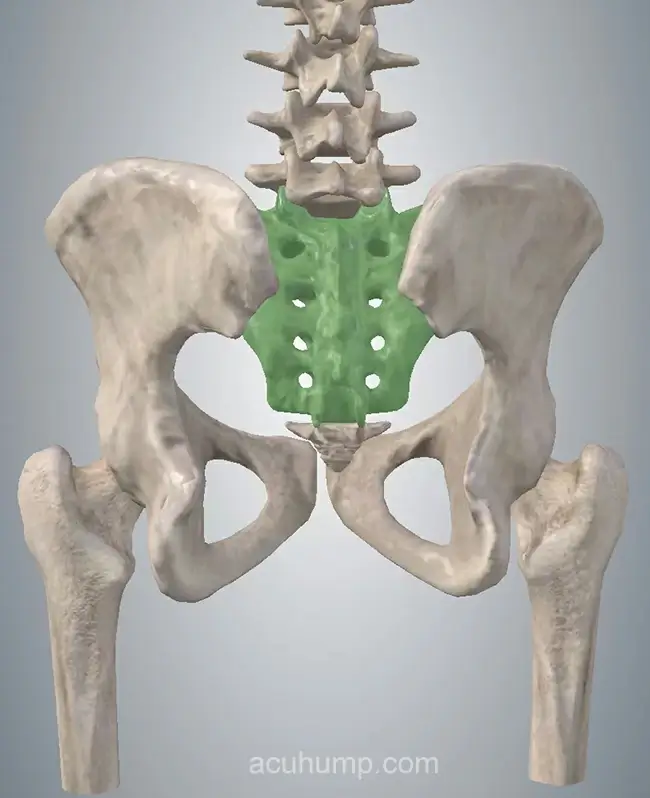
Its primary functions include providing support to the spine, transferring the weight of the upper body to the pelvic girdle, and playing an essential role in movements such as walking, standing, and sitting.
Where is the sacrum located?
The sacral vertebrae are located between the hip bones, below the last lumbar vertebra (L5)1, and connected to the coccyx (also known as tailbone), serving as the origin of the piriformis muscle.
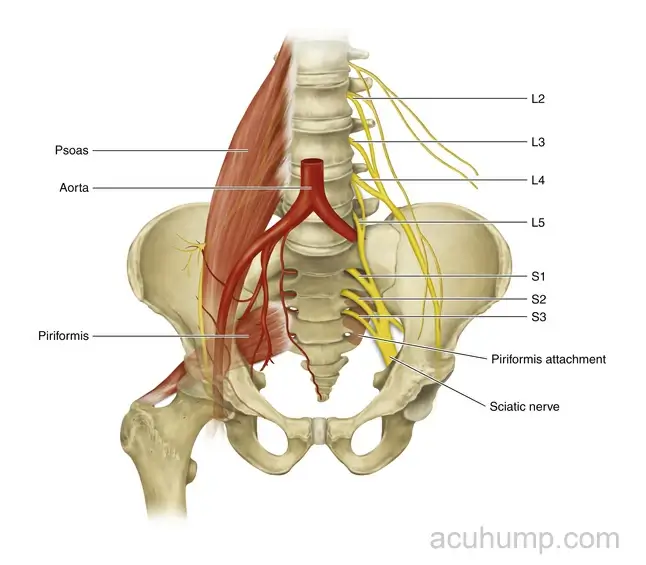
The sciatic nerve, the major nerve of the sacral plexus, originates from the lumbar spine and travels down along the sacrum zones, passing through the piriformis muscle. As a result, any conditions or disruptions affecting the sacrum or pelvic region, such as injury, inflammation, or compression, have the potential to affect the sciatic nerve.
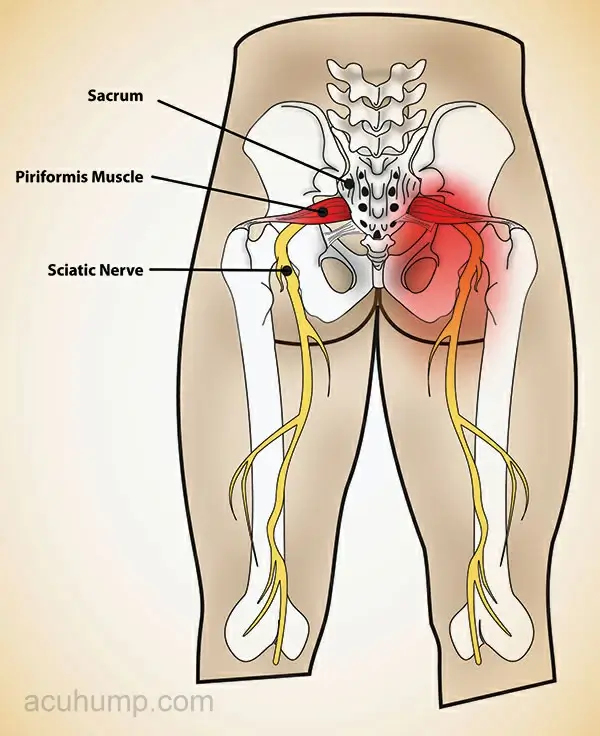
For example, abnormal movement of the sacrum or inflammation of the tissues around the sciatic nerve may lead to compression of the nerve, resulting in sciatic nerve pain (sciatica). Sciatic nerve pain is often characterized by sharp pain in the lower back, buttocks, and legs, sometimes accompanied by numbness or tingling.
What is the function of the sacrum?
Located at the junction of the spine and the pelvis, the sacrum plays a vital role in the lower back and buttocks.
The sacroiliac joints (between the sacrum and ilium) bear weight and help stabilize this region of the spine.
As with other levels of the spine, ligaments, tendons, and muscles contribute to supporting and stabilizing joint movement.
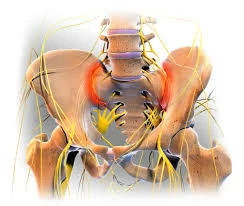
What signs do you experience when there is dysfunction?
Given its integral function, when there is dysfunction in the sacrum, various symptoms can arise, affecting the lower back, buttocks, and the back of the thighs.
Sacrum pain is divided into sacral muscle pain and sacral nerve pain.
These dysfunctions can result from several factors such as:
- Lower back pain: may be continuous or sharp
- Buttock pain: may be dull or stabbing
- Pain in the back of the thighs: a persistent discomfort
- Difficulty standing or walking, especially when getting up, walking, or going up and down stairs
- Tenderness in the pelvic area, near the sacrum or sacroiliac joint
- Increased pain after prolonged standing or sitting in the same position
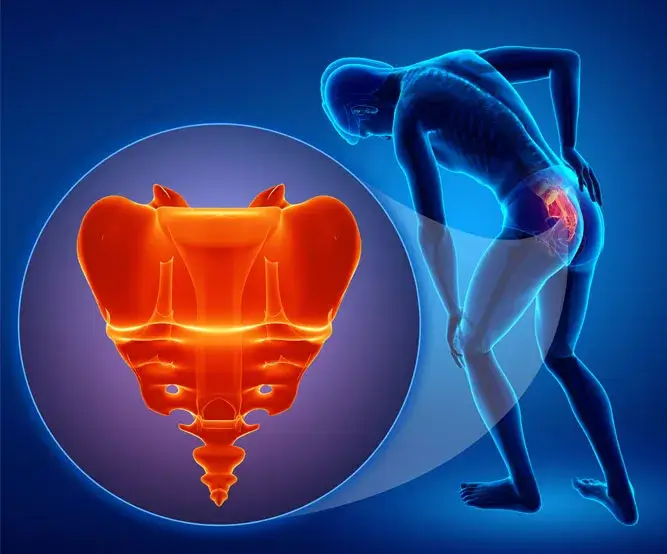
Common causes of sacrum pain:
- High-impact sports such as gymnastics, dancing, and golf
- Poor posture, such as prolonged sitting with improper posture
- Lack of exercise
- Obesity
- Pregnancy
- Trauma or injury from falls, degenerative diseases
Therefore, it is necessary to identify the root cause of sacrum pain before finding a solution.
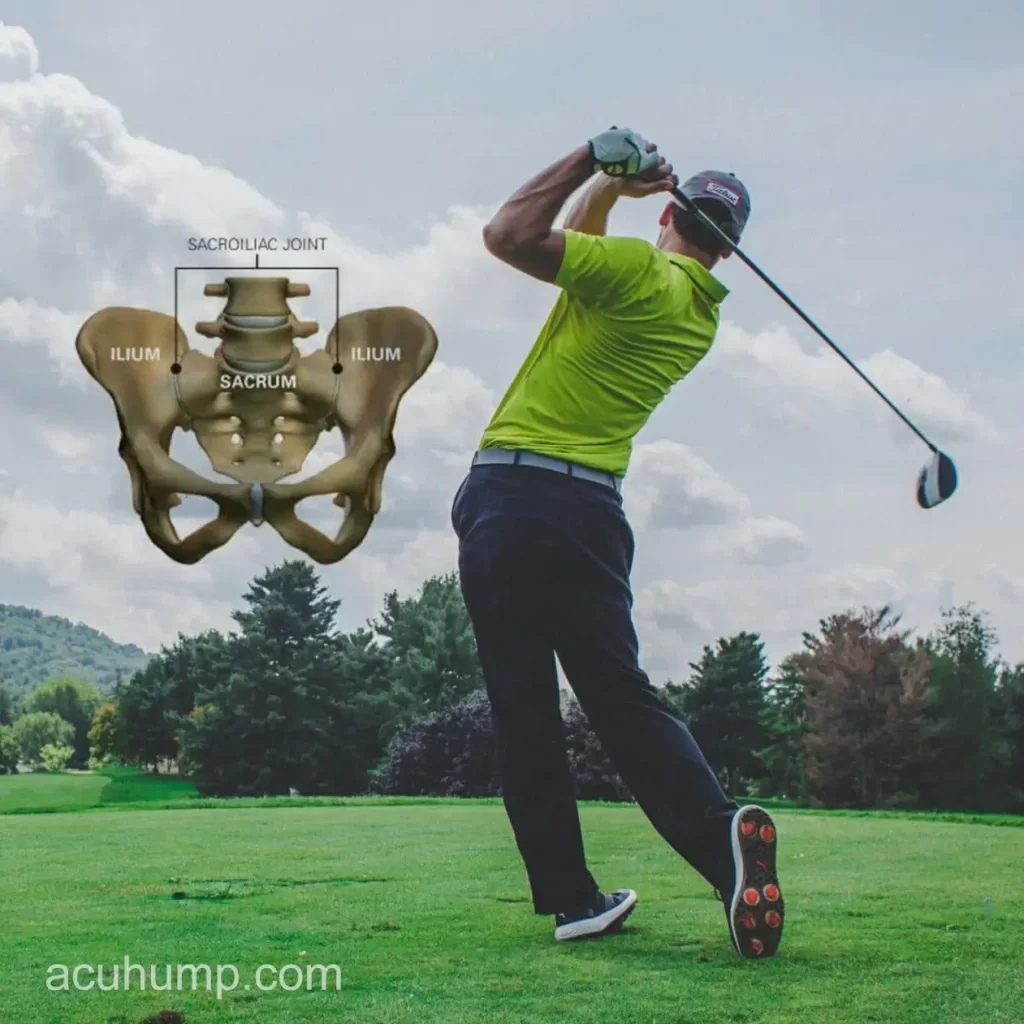
Why does your sacrum hurt?
When pain occurs, many people overlook the fact that different parts of the body are interrelated and can affect each other.
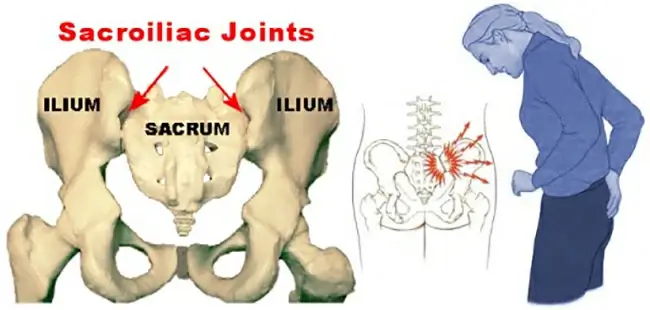
After learning about the location of the sacrum, let’s summarize the areas that can cause sacrum pain:
- Lower back: excessive pressure on the lumbar vertebrae and tight back muscles can increase the burden on the sacrum, leading to pain in the sacrum.
- Sacroiliac joint: the connection between the sacrum and the ilium. When the sacroiliac joint is damaged, inflamed, or overused, it can cause pain in the sacrum region.
- Piriformis muscle: a tense piriformis muscle can pull the sacrum, causing excessive burden and affecting its proper position.
- Core muscles: weak core muscles limit the weight they can bear, transferring the burden to the sacrum.
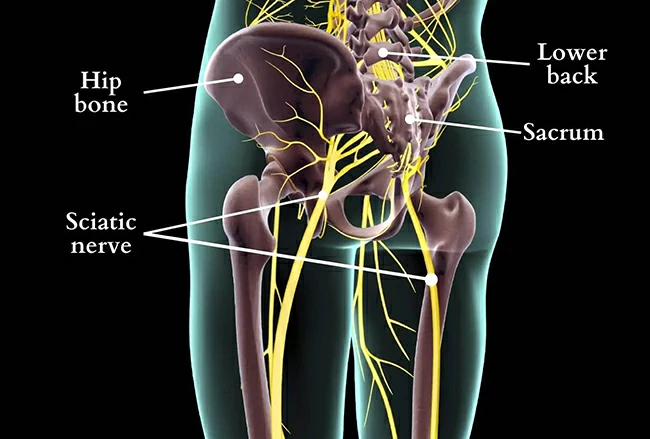
How to relieve sacrum pain?
At this point, you have learned about the four important areas that contribute to sacrum pain. Next, you will learn comprehensive methods to release these four areas and relieve sacrum pain.
Physical therapy
Adjustments and treatments for the lower back and sacroiliac joint can help restore joint position, reduce pain and discomfort near the sacrum.
Physical therapists can use manual adjustments, traction, or other techniques to relieve pressure in the sacrum area and help restore dislocated sacroiliac joints, thereby easing pain and improving mobility.
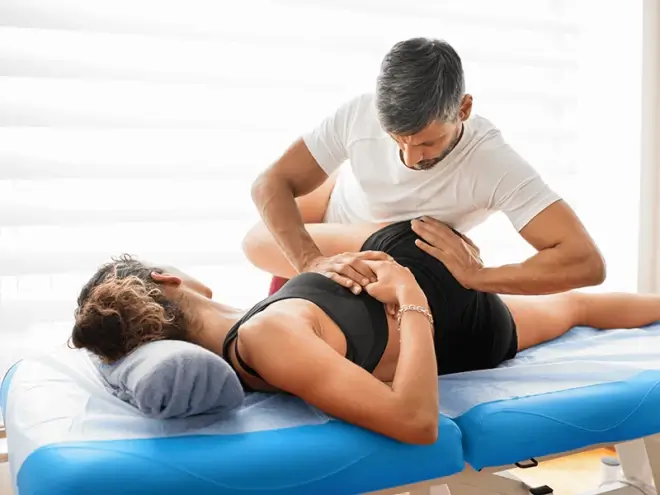
Deep tissue massage
Deep tissue massage of muscles around the sacrum can help relieve tension and pain. It promotes blood circulation, relieves muscle spasms, reduces pressure, improves body flexibility for sacrum pain relief.
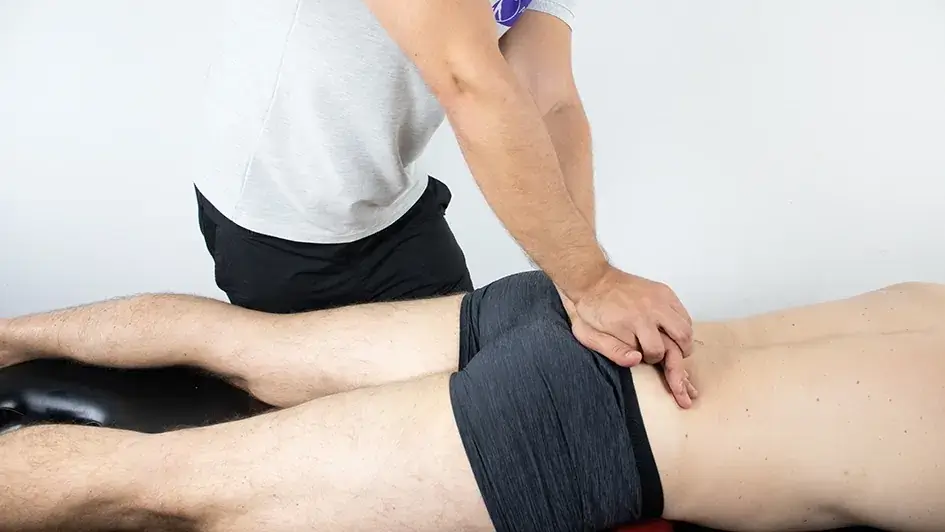
Stretching exercises
Stretching exercises for the lower back, sacrum, piriformis, and core muscles help increase flexibility, relieve muscle tension, and reduce pain.

These stretching exercises can help restore muscle balance, reduce tension, and strengthen the stability of the muscles around the sacrum, thereby relieving sings of sacrum pain.2
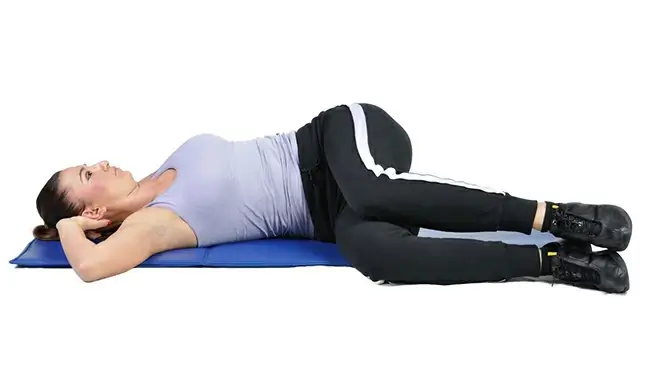
Acu-hump
The best home remedy that most people can benefit from.
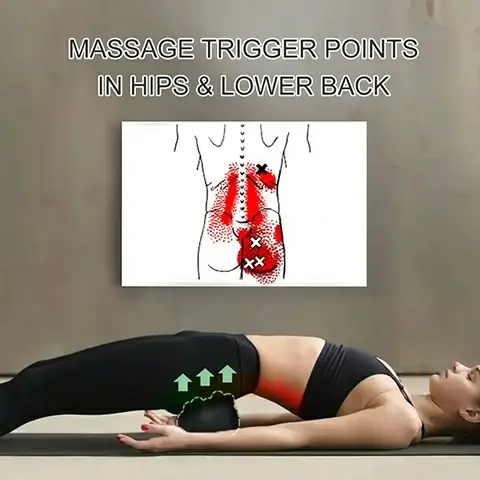
This tool applies tough pressure to deep tissues, helping to relieve muscle tension, improve blood circulation, and break trigger points to relieve pain.

You can just pick it up and have a deep tissue massage anytime you want.
It’s like having a family therapist at home, no need for an appointment.
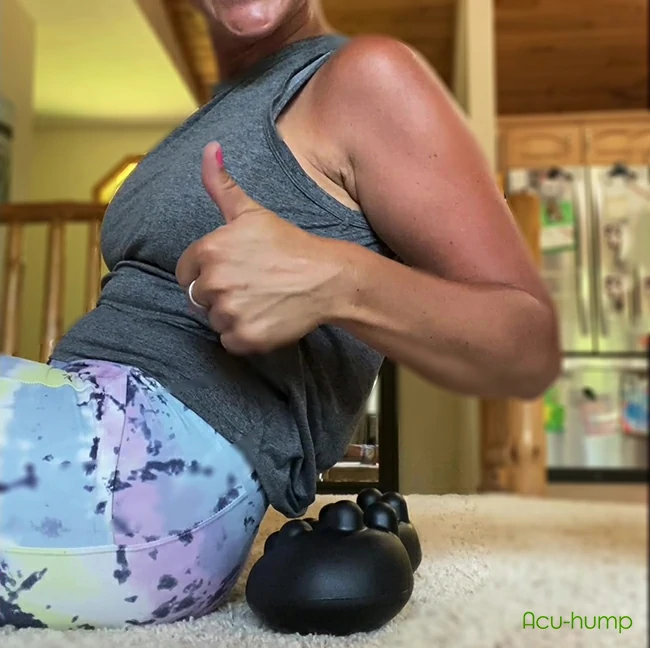
You don’t have to struggle searching.
Purchase an Acu-hump, and you will receive a clear stretching manual.
Acu-hump comes with a paper stretching manual, and you can also view the instructions on the website.
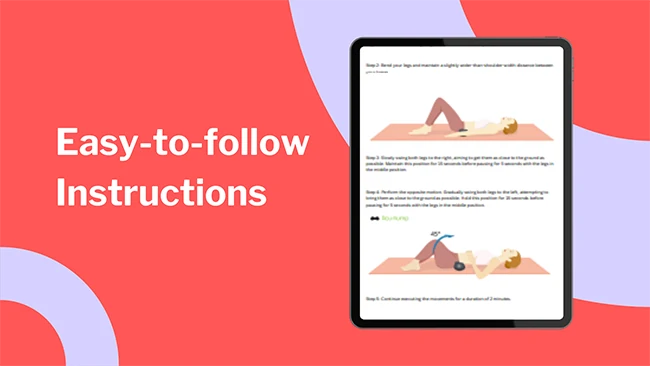
With the help of Acu-hump, in just 10 minutes, you will sequentially release tension in the lower back, sacroiliac joint, buttocks, back of the thighs, and core muscles.
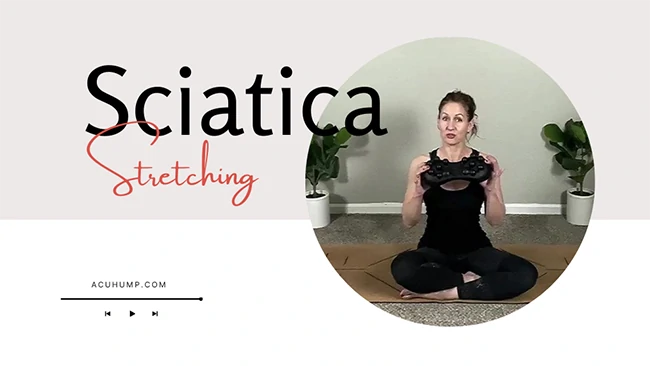
The tight sacral region will all be relieved.
Acu-hump is available for purchase on Amazon with a 30-day full refund policy!
Purchase it now, you have no risk!
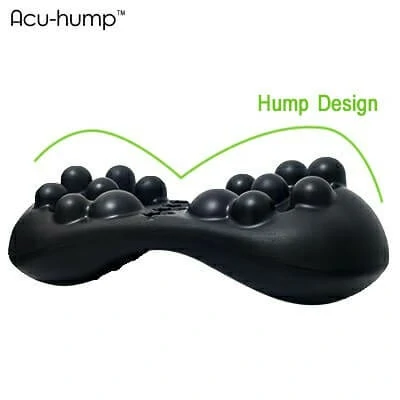
Acu-hump®
Release Butt & Lower Back
Now giving you a stretching course worth $50 as a gift.
You miss 100% of the shots you don’t take.
What if Acu-hump is exactly what you need?
Hear What Our Satisfied Customers Say
Read testimonials from multiple customers who found relief with Acu-hump.

Amazon Customer
August 8, 2023
Suffering for 10 straight years of non-stop SI Joint, Lower Back Pain I’m not going to say it’s gone but I feel relief. I have had procedure after procedure with pain management no relief at all. You just have to wiggle yourself around to you find you area in need for relief. I have bought so many contraptions I thought this would be just another one I honestly was sending it back I bought didn’t pain attention thought it was going to be electrical when I received it and wasn’t it was going back! I then said Hey like all the rest let me just give it a try I have had this agonizing aching pain right at l4/l5/S1 where I every time I sat on the toilet bent over it was brutual and I can finally say it’s tolerable! I see a rating is comfort I can’t rate that because when you’re in pain nothing is comfortable.. I would pay any amount of money to rid this pain so not everybody’s monies are the same so value for my money was for sure a 5.
I also have never written one review on amazon and I buy something every single day!

Momma at the lake
September 11, 2023
I purchased this because I suffer with sciatica on both sides. Used it on the bed and did the exercises with my husband’s assist… while doing this I noticed the soles of my feet getting numb. Did the exercises slowly. Removed the product and raised up and stood on my feet with no pain. I almost started to cry. RELIEF

Workin’ Mom
March 29, 2023
This massager alleviates my sciatica pain and I am so thankful for it.
References:
